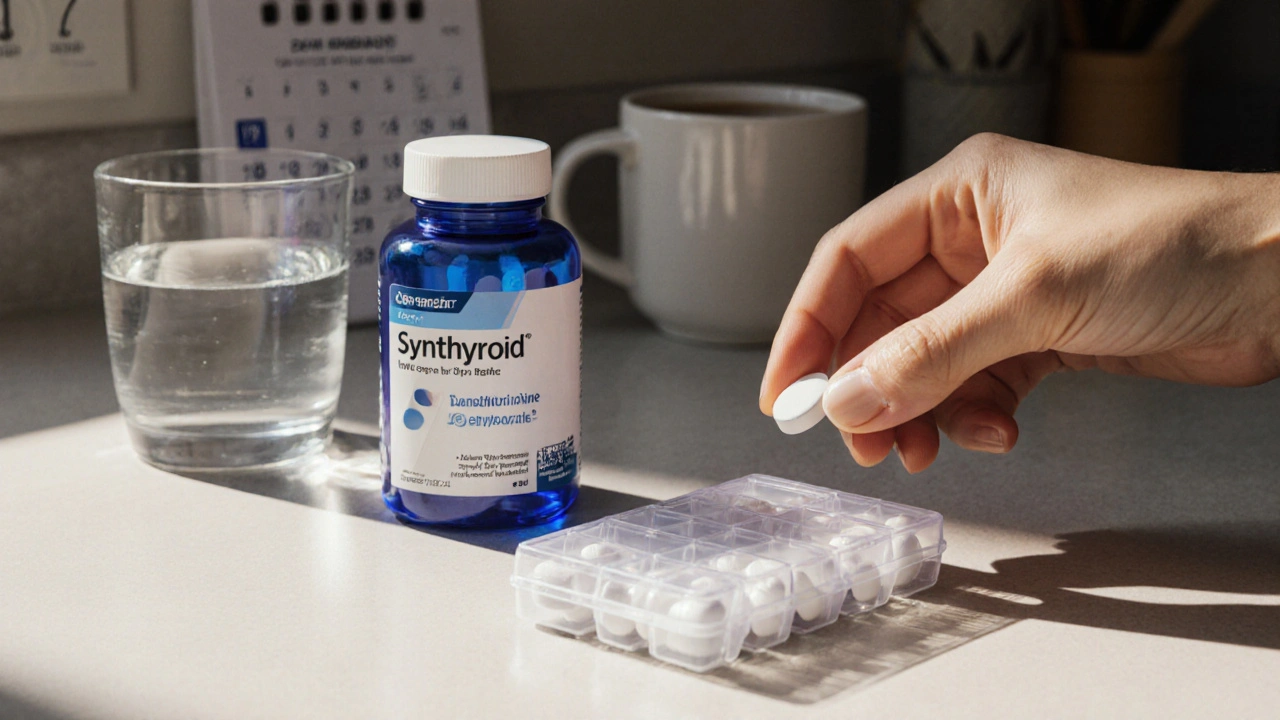Levothyroxine: Essential Guide & Resources
When managing Levothyroxine, a synthetic thyroid hormone (T4) prescribed for low thyroid function. Also known as Synthroid, it restores normal metabolism in patients whose thyroid doesn’t produce enough hormone. The drug sits at the core of hypothyroidism, a condition affecting millions worldwide. Effective treatment hinges on thyroid hormone replacement therapy, which aims to mimic the body’s natural hormone balance. Doctors monitor success through regular TSH tests, checking how the pituitary gland responds to the medication. Understanding these connections helps you keep your dosage right and stay symptom‑free.
Key Aspects of Levothyroxine Therapy
First, dosage isn’t a one‑size‑fits‑all number. Your doctor will start with a low dose, often 25–50 µg, and adjust based on weight, age, pregnancy status, and how your TSH values change. A typical maintenance range lies between 75 and 125 µg daily, but some patients need more. Remember, Levothyroxine absorption can be thrown off by food, calcium supplements, or iron pills, so most guidelines suggest taking it on an empty stomach with water, waiting 30‑60 minutes before breakfast. This simple habit can make the difference between stable thyroid levels and fluctuating symptoms.
Second, drug interactions are a hidden pitfall. Common culprits include proton‑pump inhibitors, cholesterol‑lowering statins, and certain antidepressants that either block absorption or alter hormone metabolism. For example, taking levothyroxine together with a calcium carbonate antacid can cut its effectiveness by up to 30 %. If you need these other meds, space them out by at least four hours. Knowing which medications interfere helps you avoid unexpected dose adjustments and keeps your thyroid on track.
Third, monitoring isn’t just about the lab numbers; it’s about how you feel. Symptoms of under‑replacement include fatigue, weight gain, and cold intolerance, while over‑replacement can cause anxiety, rapid heartbeat, and insomnia. When your TSH reading is within the target range (usually 0.4–4.0 mIU/L), but you still feel off, discuss a possible fine‑tuning with your clinician. Sometimes adding a short‑acting liothyronine (Cytomel) can smooth out the peaks and valleys, especially for patients who don’t feel fully balanced on T4 alone.
Fourth, special populations need extra attention. Pregnant women often require a higher dose because the developing baby depends on the mother’s thyroid hormone. Children and the elderly also have unique dosing needs; kids may need growth‑related adjustments, while seniors benefit from the lowest effective dose to avoid cardiac stress. Understanding these nuances ensures that Levothyroxine supports health across all life stages.
Fifth, brand vs. generic matters for some users. While the active ingredient is the same, inactive fillers can differ, influencing absorption for sensitive individuals. If you switch from a brand like Synthroid to a generic version and notice changes, talk to your pharmacist about a bioequivalent option or stick with the brand that works best for you.
Finally, keep a clear medication record. Write down the exact brand, strength, time of day you take it, and any other drugs or supplements you use. This log helps your healthcare team spot patterns, catch missed doses, and troubleshoot side effects quickly. A well‑kept record is a powerful tool in maintaining stable thyroid function.
With these fundamentals in mind, you’re ready to explore the detailed articles below. We’ve gathered guides on dosage strategies, interaction alerts, monitoring tips, and real‑world patient stories—all aimed at helping you get the most out of Levothyroxine therapy.
Synthroid (Levothyroxine) vs. Alternative Thyroid Medications: In‑Depth Comparison
Compare Synthroid with levothyroxine, Armour Thyroid, Cytomel, and combination therapy. Learn pros, cons, costs, and how to choose the right thyroid medication.
Read More





